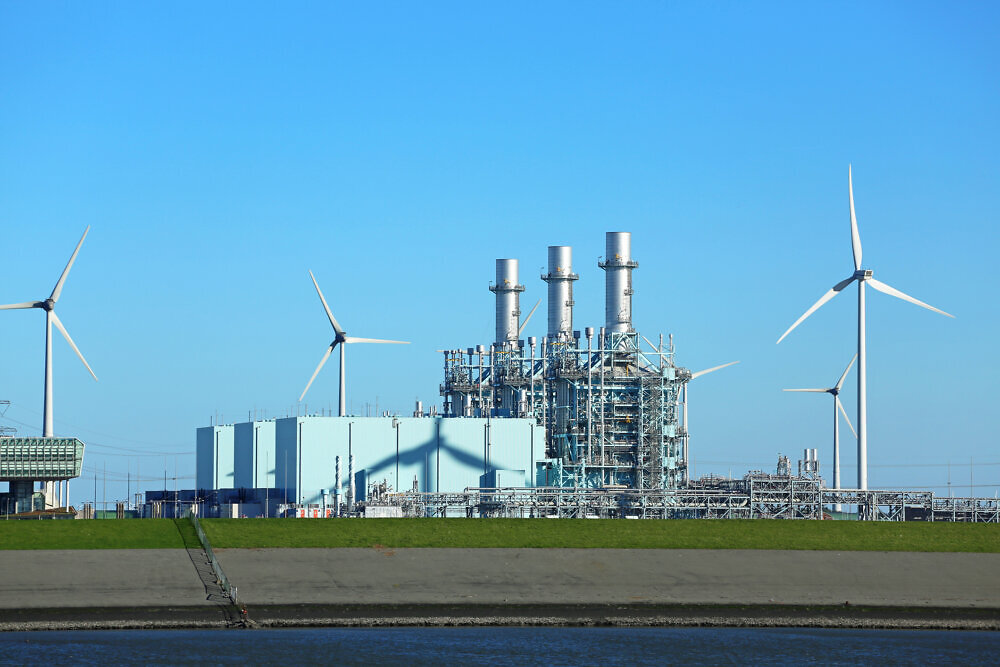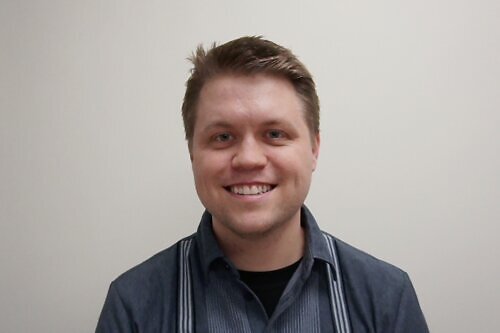
Sesame Sustainability, a startup company with roots in the MIT Energy Initiative (MITEI), recently launched its first product, a software tool called Sesame One, following a first round of seed funding last year. This tool was created to help industrial companies identify viable decarbonization pathways that align with business objectives, including cost and operational constraints. The company’s founders hope the tool will hasten the industrial sector’s transition to clean energy options.
Sesame Sustainability is the latest company to spin out of MITEI. Since MITEI’s inception in 2006, more than 30 companies that have some tie to MITEI—either a founder or the technology having received some form of MITEI support—have been launched. Sesame Sustainability is targeting the industrial market and aims to simplify and speed up the complicated analyses that those companies use to make decisions that could reduce their carbon emissions.
Sesame Sustainability’s tool, Sesame One, was released in July. It enables decision makers in industrial companies to devise decarbonization strategies that involve changes in their standard energy supply chain to clean energy alternatives. Sesame One includes access to up-to-date data on cost, emissions, and other details of many industrial processes and energy technologies, and it’s designed to be easy to use. Planners can use the tool to perform dynamic, real-time exploration and optimization of clean energy opportunities for power generation, storage, and low-carbon fuels. The outcome can be a list of long-term investment options that would reduce carbon emissions and also make business sense.
Sesame was born out of a need for transparent, cross-sector modeling—capable of integrating cost, emissions, and technical feasibility into a single, flexible platform. The ideas for such a tool originated with a 2017 research project that was designed to identify a way to compare carbon mitigation technologies in terms of cost and emissions. To perform that comparison efficiently and effectively, a MITEI team began developing a software platform that eventually became the Sustainable Energy Systems Analysis and Modeling Environment, or SESAME.
Emre Gençer, Sesame Sustainability’s CEO and co-founder, and a former principal research scientist at MITEI, and Frank O’Sullivan, MITEI’s director of research at the time, brought together as many as 25 researchers, including postdocs, PhD candidates, master’s students, and several visiting scientists from a range of disciplines to tackle the challenge. “That cross-discipline collaboration really helped us think a little bit ‘outside of the box,’” says Gençer.
The original research project that resulted in Sesame was supported by MITEI member company ExxonMobil. In the years that followed, other MITEI member companies supported projects to develop or apply Sesame—and now many of those companies are customers of the startup company. Gençer stresses that those early interactions with MITEI member companies were invaluable in providing feedback that helped the team focus on the right problems.
In 2023, Gençer and two of his colleagues at MITEI—Jim Owens, now head of engineering, and Paul Sizaire, now head of product—launched their company, and a year later they announced a $2.4 million seed round co-led by Flybridge and Powerhouse Ventures.
Dealing with a growing challenge requires the right tools
Industrial companies operate with complicated processes that have existed for long periods of time and rely on established supply chains. Any changes to those processes require complex analysis that can consider clean-energy possibilities and the ripple effects of those choices: A plan made today could in the future turn out to have been a billion-dollar mistake.
Company planners need a way to quickly and accurately perform a very detailed trade-off analysis of the available technologies that includes an understanding of the system-wide context. Traditional spreadsheet models rarely allow for comparing options or looking at multiple pathways together so the user can see the real-time impact of various technologies across the energy landscape as a whole. And they don’t allow the planner to explore how the new option would fit into the company’s existing processes and practices.
“Planners need to do this analysis for all their locations around the world and repeat the analysis very frequently because clean energy technologies are changing so quickly,” notes Gençer. That rapid change makes the timing of such an investment a big question of whether they should invest now or wait a couple of years because the technology may improve again or a totally new technology may emerge.
Gençer likens Sesame One to “Sim City for industrial decarbonization, or industrial decision-making, providing a sandbox-like environment where users can map existing infrastructure, test decarbonization scenarios, and evaluate system-level impacts of each choice in minutes.” Sesame offers an array of “technology modules” that represent various processes used by companies around the world today and available low-carbon options such as carbon capture, energy storage, clean energy carriers, and more.
With those technology modules as building blocks, a user starts by entering certain financial information and visually setting up components in the existing facilities, adjusting features such as plant efficiencies and outputs to reflect current operations. The user then replaces certain of the current components with low-carbon options and runs an analysis. Within minutes, the software generates costs and emissions for the new supply chain “pathway.” By combining different technology modules, the user can quickly explore the impacts of different pathways on overall costs and carbon emissions.
In addition, Sesame One includes a very sophisticated power system model integrated within the same environment as emissions and cost modeling—enabling joint analysis of facility-level and grid-level impacts, which is typically siloed in traditional tools. Traditionally, the power system model is kept separate from the rest of the emissions analysis, cost analysis, process systems analysis, and so on. By having them all interact, Sesame One provides what Gençer calls a “game-changing capability.”
“Let’s say you want to decarbonize a refinery by introducing your own renewable energy generating system, such as solar or wind. Those sources are variable and intermittent. Unless you really understand the profiles of what to expect in your particular location, it’s hard to plan,” says Gençer. A Sesame One user can combine an analysis of how the new renewable power system will interact with refinery facilities and determine the overall impact on costs and emissions.
Students, engineers, policy makers, and others can learn how to use Sesame One to think critically and systematically about their energy challenges and opportunities by taking an online MIT course called “Systems Thinking in Energy: Navigating Costs, Emissions, and Impact.” The course will be available on MITx Online through December 16, 2025.
At MITEI startup, Jim Owens PhD ’25 helps companies assess their clean energy options
Nancy W. Stauffer, MITEI

Jim Owens PhD ’25, head of engineering at Sesame Sustainability, works closely with industrial decision makers to help them understand the potential impacts on costs and emissions of various options for reducing carbon emissions at their company. Courtesy of Sesame Sustainability.
Jim Owens had long been interested in helping industrial companies identify the best options for cutting their carbon emissions. When two of his colleagues at the MIT Energy Initiative (MITEI) proposed a startup focused on developing software that would enable companies to assess their energy transition options, he immediately signed on as a co-founder.
Almost two years later, as head of engineering at Sesame Sustainability, a startup spun out of MITEI, he spends much of his time working with company decision makers to create and apply the software tools they need to perform a quantitative assessment of the costs and benefits of clean-energy options for their particular company.
The pathway to Sesame
When Owens arrived at MIT as a graduate student, he knew he wanted to work at the forefront of the energy transition. A chemical engineer by training, he was doing his own research, which involved modeling the impact on the power grid of enabling vehicle-to-grid electricity transfer. His thesis advisor was Professor Robert C. Armstrong, then director of MITEI.
Owens sat among other MITEI researchers, most of whom were working on projects involving modeling and simulation, which intrigued him. “I really enjoy working on problems where you can see or imagine the real-world impact,” he said.
Owens was part of the Sesame group, which was working on a software tool to help companies reduce carbon emissions without raising the prices on their products. He helped develop what became the early academic version of Sesame One, Sesame Sustainability’s recently released product. Owens had seen first-hand that companies needed help to find viable energy transition and decarbonization strategies. He had worked for a year at ExxonMobil, and then, as part of his MIT PhD program, he spent full-time semesters performing technical consulting for Schlumberger New Energy Ventures, Via Separations, and Saint-Gobain Research North America.
A few years later, he and two of his Sesame group co-workers, Emre Gençer and Paul Sizaire, started talking about potentially spinning the work out into a company. When you’re in academia, “everything needs to be published. So you can’t work on companies’ real problems,” he said. In January 2024, they launched their startup, Sesame Sustainability.
Today, Owens works directly with industrial decision makers—including those at Fortune 100 companies and global utilities—to help them evaluate their decarbonization options. Rather than waiting months for fragmented consulting studies, companies use Sesame One to model their complete energy supply chains, compare multiple pathways, and understand the cost and emissions trade-offs in weeks instead of quarters. “We’re giving them the clarity they need to move forward,” he said.
For Owens, the path forward involves growing Sesame Sustainability’s technical team while helping more companies gain clarity on their decarbonization options. “Decision makers need confidence to act. That comes from rigorous analysis of what will actually work for their business,” he said. “Building that capability at scale is how we’ll drive real industrial climate impact.”